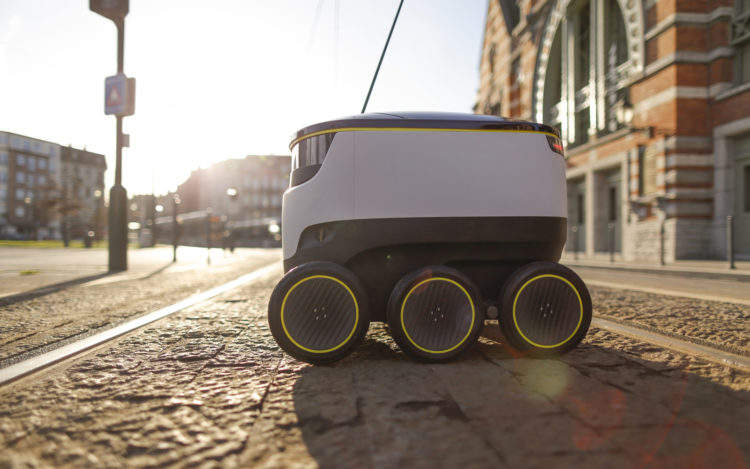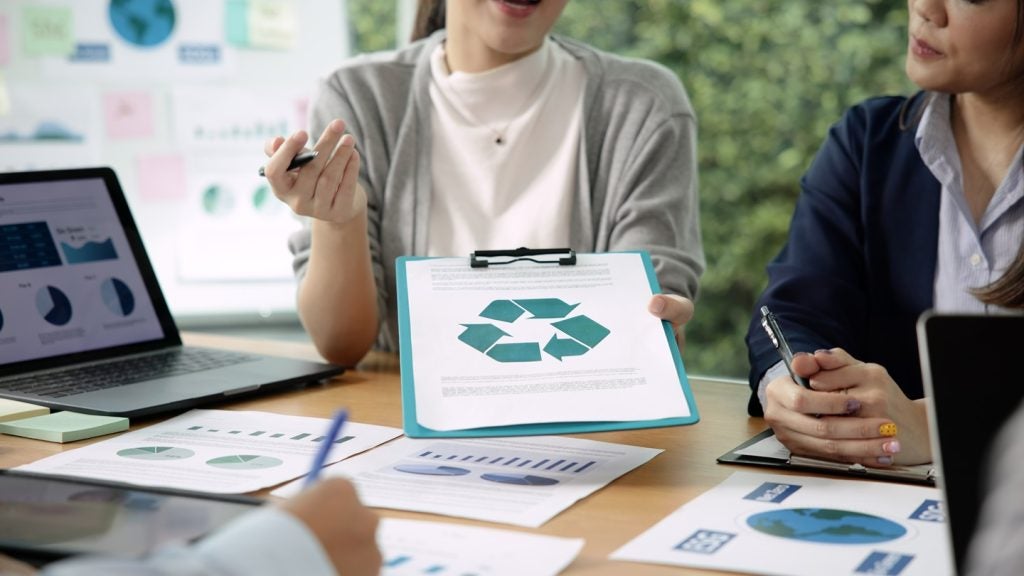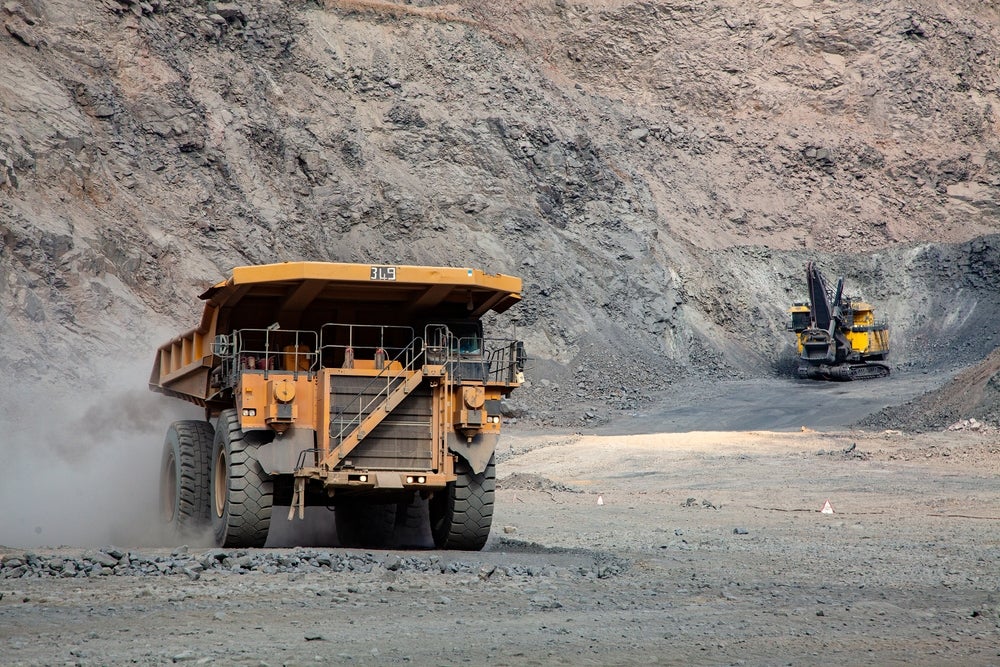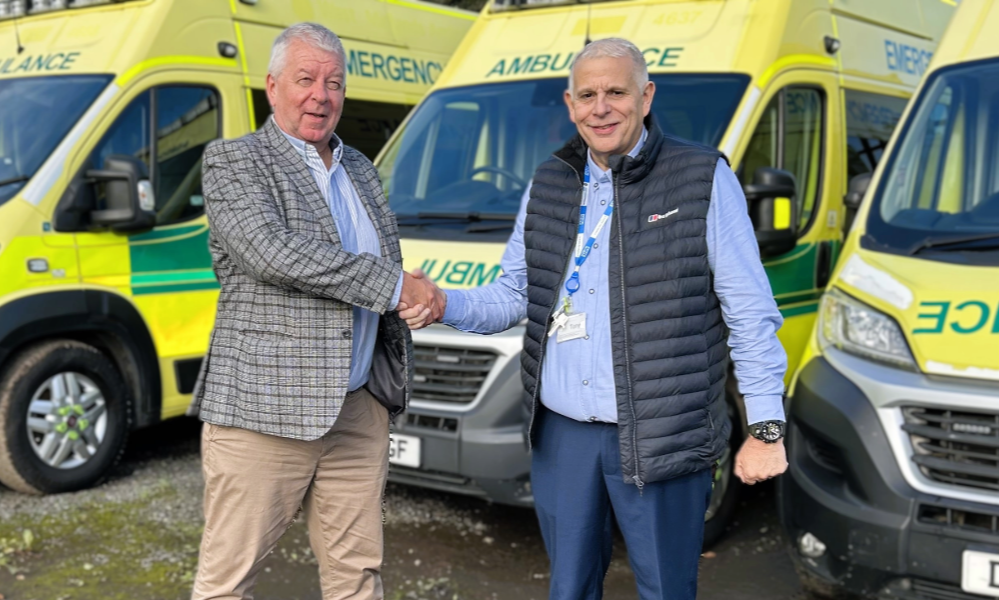
Freight mobility has embarked on a journey of technological change. As artificial intelligence and increasingly specialised data come into play, the digitalisation of commercial fleets edges ever closer. Saad Ahmed takes a closer look.
Walking through the corridor at the hotel where Frost & Sullivan’s Intelligent Mobility Conference took place, I was greeted by a curious sight.
The clean white pod of a delivery robot, developed by Starship Technologies, whizzed past bemused onlookers, lights blinking as it went. Although I was initially surprised, delivery robots are becoming commonplace – or so we were told.
Held on 29 June, Frost & Sullivan’s ninth Intelligent Mobility Conference focused on The Future of Freight Delivery in its fifth panel of the day.
Starship Technologies was launched in 2014 by Skype co-founders Ahti Heinla and Janus Friis. After tests in 83 cities worldwide, Starship’s fleet has robots roaming the roads in the San Francisco Bay area, Washington DC, Arkansas, Hamburg, Bern and London.
The company claims that when encountering one of its robots on the street, 80% of humans notice it, but do not give it a second thought. Just 1%, Starship claims, even question its presence.
How well do you really know your competitors?
Access the most comprehensive Company Profiles on the market, powered by GlobalData. Save hours of research. Gain competitive edge.

Thank you!
Your download email will arrive shortly
Not ready to buy yet? Download a free sample
We are confident about the unique quality of our Company Profiles. However, we want you to make the most beneficial decision for your business, so we offer a free sample that you can download by submitting the below form
By GlobalDataIt also says that, after 7m encounters with humans, there have been no attempted thefts. “It’s like a massive homing beacon to the authorities. It’s got nine cameras, it’s got sirens if you try and tamper with it or pick it up, it’s got two-way audio,” said Henry Harris-Burland, vice-president of marketing at Starship technologies, at the conference.
Autonomous delivery robots were not the only order of the day, as technological advances in truck and LCV fleets took centre stage.
Christoph Domke, director, commercial vehicles, mobility practice at Frost & Sullivan, moderated the panel, and opened the section with some of his thoughts. “In the future, goods will spend less time in the warehouse and more time on a vehicle, whatever the vehicle will look like,” Domke said.
According to Frost & Sullivan’s projections, the share of global logistics spending devoted to warehouses will decline to 15% by 2020, compared with the 25% recorded in 2016. Value-added services will rise to account for 10% of the logistics spend, twice its share recorded in 2016.
The spend on transport itself would rise to 70% from 60%. Overall, spending on logistics is projected to rise to $10.6trn, up from $8.06trn in 2016.
Domke explained that declining warehouse space and demands for faster and more efficient deliveries would give rise to interesting concepts in freight delivery, adding that he believed autonomous trucks and light commercial vehicles (LCVs) were now coming within reach.
“If we look at the car and light commercial vehicle side, we can probably assume some fully autonomous vehicles probably from the end of the next decade. That’s more or less in line with fully autonomous trucks, which could be a year or two later,” he said.
Truck “platooning”, in which one vehicle acts as a lead and others follow autonomously, was also raised by Domke as a developing trend in smart logistics.
“We have a group, or platoon of trucks being connected by certain technologies, [such as] lidar, wireless, video, and camera,” he said, while cautioning that regulation and societal perceptions would have to change in order to make this possible.
The last mile
The panellists presented their technologies as solutions that could end the issues of allocation, speed and service in the trucking and delivery industry.
Harris-Burland said Starship aimed to fix a delivery problem that he called the “last mile”, which he claimed caused financial loss to operators.
“It’s the bottleneck in logistics. Up to 40%, sometimes 50%, of transportation costs can be weighted in the last mile. We all know it’s incredibly inefficient; everybody’s trying to make it more efficient,” he said.
Starship’s delivery robots are “99% autonomous”, retaining the function for human takeover from a remote location, in the event of an unexpected occurrence.
“There’s a long tail of situations that a robot can find itself in that technology can’t solve right now. We must have human assistance,” Harris-Burland added.
More traditional logistics companies also offered up solutions for improving freight delivery. Manöella Wilbaut, head of global commercial developments – sustainability, DHL Customer Solutions and Innovation, first questioned the key principle of logistics. She told the conference attendees that effectively managing logistics was about expecting the unexpected.
“We need to plan, and we need to be ready, but still you never know what can happen,” she warned. “How can we make sure the cargo does not remain stuck?”
Wilbaut said that logistics was the “mirror” of other industries; delivery needs would increase as other industries saw sales rise.
Frank Tinschert, vice-president, telematics and digital solutions at MAN Truck and Bus, introduced RIO, a cloud-based operating system for the transport industry, which it launched in 2016.
“I would like to introduce you to something that is pretty unique,” Tinschert said, going on to identify five major challenges in logistics: increasing complexity, cost and time pressure, missing transparency in the supply chain, missing assurance of planning and decision-making, and covered views within the supply chain. RIO, Tinschert told the audience, was the answer.
“You would be very surprised at how supply chain works nowadays, it is still pretty old-fashioned,” he said.
“RIO is a platform that tries to address and link up the information flow between different players in the supply chain.”
Tinschert used the example of an operator who controls a fleet of seven vehicles across the world. Despite having a small fleet, the operator was part of a larger supply chain that stretched from China to Finland.
The challenge, Tinschert explained, was to ensure that information was allowed to flow between all the various stages of the transportation process.
Bringing the Internet of Things (IoT) to fleet management, RIO absorbs data from trucks, processes it, and offers services through its marketplace.
Tinschert’s presentation showed a future vision of full IoT integration across the supply chain, where data from warehouses, shipping vessels, LCVs, cargo planes, and even freight trains would transmit data to the cloud.
“RIO is an open, IoT cloud-based platform that will also integrate the multi-modality of digital supply chains. We must track the container. We must track how the harbour works. We must track ships, barges and so on, to have a full picture in the digital supply chain,” Tinschert said.
Frost & Sullivan said the connected trucks market could create opportunities worth $245bn by 2025, making it the biggest growth area connected to commercial vehicles.
Starship Technologies envisioned a world without commercial vehicles – at least not in their current form. Harris-Burland unveiled a partnership with Daimler, which would see the German manufacturer carry a bevy of bots in its LCVs.
“This is a parcel delivery van with Starship robots inside that can roam round neighbourhoods, dropping off robots to deliver parcels to doors, and then roaming around to other parts of the neighbourhood and picking up empty robots, going back to the fulfilment centre to pick up more parcels,” he said.
Starship is not the only company making delivery robots: Harris-Burland himself admitted the company had 10 competitors. Regulation is on its side, however, with 19 local and municipal governments across the US and EU approving delivery robots. Harris-Burland said Starship was working with the UK and Germany, and six US states had already passed ordinances allowing the company’s technology to roam free.
“We want to take those vans and cars off the road, reduce congestion, reduce pollution, and replace them with zero-emissions delivery robots,” Harris-Burland said.
As the low-emissions movement continues to gather pace, it seems increasingly less outlandish that non-polluting delivery robots may become an increasingly common sight on the world’s roads.







